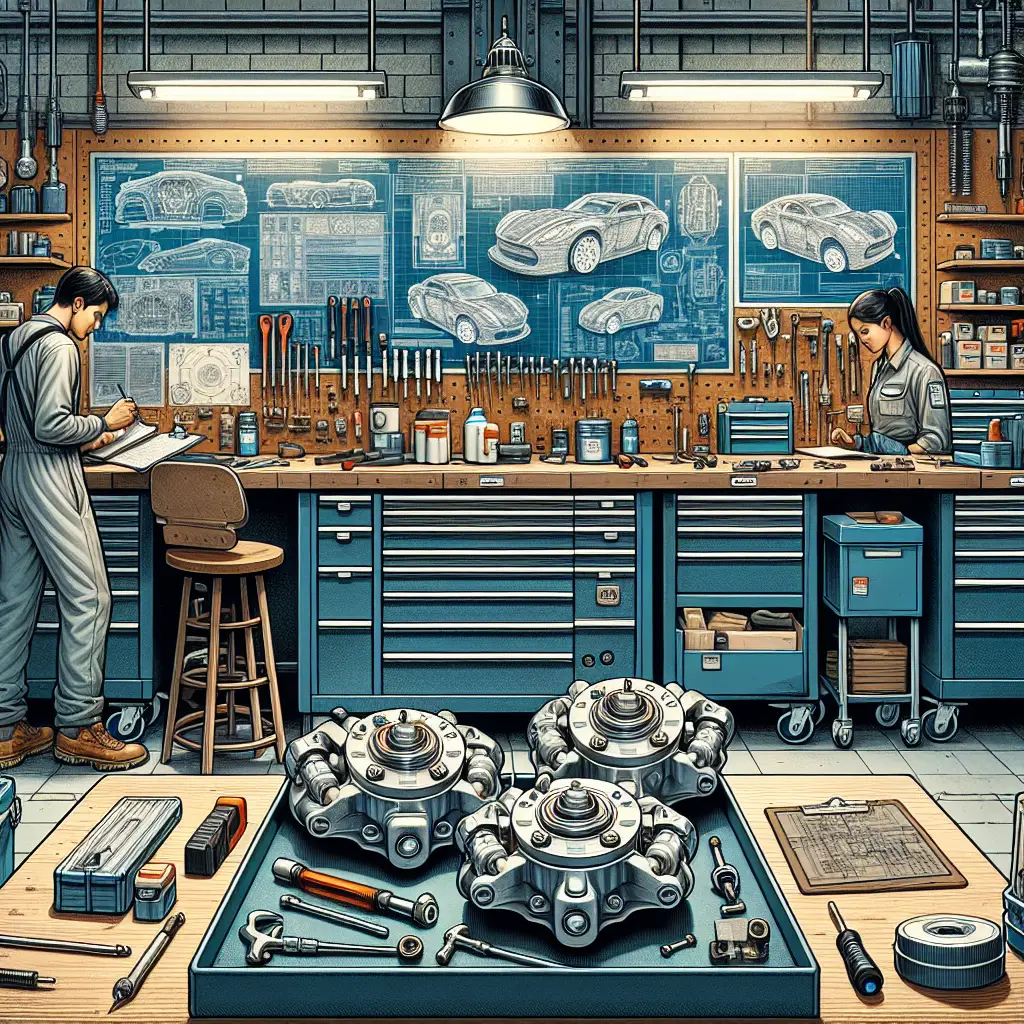How to Bleed Wilwood 6 Piston Calipers: A Step-by-Step Guide for Optimal Brake Performance
Brakes are the unsung heroes of vehicle safety and performance. At the heart of an efficient braking system in many performance and racing applications, you’ll often find high-quality components like Wilwood 6 piston calipers. But even the best brake systems need regular maintenance. One critical maintenance task is bleeding the brakes, a process that removes air bubbles from the brake lines to ensure firm pedal feel and the most responsive braking possible. In this blog post, I’ll take you through the essential steps for bleeding Wilwood 6 piston calipers, ensuring your brakes perform at their peak when you need them most.
Understanding the Importance of Brake Bleeding
Brake fluid must remain incompressible to transmit the force from your brake pedal to the caliper pistons. Air, unlike brake fluid, is compressible, and when it’s present in the brake lines, it can lead to a spongy or soft brake pedal, compromising your vehicle’s braking efficiency and safety.
Wilwood, a leading manufacturer of high-performance brake systems, recommends regular bleeding of the brakes as part of routine maintenance, particularly on their 6 piston calipers, popular among motorsport enthusiasts and high-performance vehicle owners (source). Bleeding brakes can sound daunting to the DIY mechanic, but with the right tools and a clear guide, it’s a manageable task that can save you time and money.
Tools and Materials Needed
Before we start, it’s important to gather all the tools and materials needed for the job:
- Wilwood 6 piston calipers (installed on your vehicle)
- High-quality brake fluid (check Wilwood’s specifications here)
- Wrench set suitable for your bleeder valves
- Brake bleeder bottle or a clear tube that fits snugly on the bleeder nipple and a container to catch the fluid
- A helping hand – bleeding brakes usually requires two people
Step 1: Preparation
Safety first! Ensure your vehicle is securely raised on jack stands and the wheels are removed to gain access to the brake calipers. Check the brake fluid reservoir and top it off if needed—never let it run dry during the bleeding process as this could introduce more air into the system.
Step 2: Starting at the Right Spot
For vehicles with six piston calipers, you’ll need to bleed the brakes in a specific order because these calipers often have more than one bleed screw. Start with the caliper farthest from the brake fluid reservoir and work your way to the closest. Typically, the order is passenger-side rear, driver-side rear, passenger-side front, driver-side front.
Step 3: The Bleeding Process
Having your helper press the brake pedal, open the furthest bleeder screw with your wrench to allow brake fluid (and air) to escape. Have a clear hose attached to the nipple of the bleeder screw and submerged in brake fluid within the catch bottle to avoid air getting back into the system. Your helper should press the pedal until it reaches the floor, hold it there, and you should then close the bleeder screw. This process should be repeated until no more air bubbles are seen exiting the caliper through the clear hose.
Repeat this step on each bleeder screw on each caliper, moving closer to the brake fluid reservoir. It’s crucial never to allow the brake fluid reservoir to run empty.
Step 4: Check Your Work
With all the calipers bled, it’s time to check your work. The brake pedal should now feel firm to the touch when pressed. If it’s still spongy, there might still be air in the lines, and you’ll need to repeat the bleeding process. Check the brake fluid level in the reservoir again and top off if necessary.
Step 5: Testing
Once you’re confident that the bleeding process has been successful, re-fit the wheels, lower the vehicle, and take it for a slow and controlled test drive in a safe area. Pay attention to the pedal feel and braking responsiveness. If everything has been done correctly, you should notice a significant improvement in brake performance.
Final Thoughts
Regular maintenance, such as bleeding your brakes, goes a long way in ensuring the longevity and effectiveness of your vehicle’s brake system. Wilwood’s 6 piston calipers are precision-engineered for high performance, but they still depend on properly bled hydraulic systems to operate correctly.
Remember that brake fluid is caustic and can damage vehicle paint and other surfaces, not to mention it’s harmful if ingested or if it makes contact with skin and eyes. Always use protective equipment and handle brake fluid with care.
If you’re unsure about any part of this process or if you want further information on Wilwood’s 6 piston calipers and brake systems, referring to the official Wilwood resources (like their comprehensive FAQs) or consulting with a professional mechanic is always the best course of action.
Good luck, and safe driving!
Disclaimer: Vehicle repair and modifications can be dangerous and should only be undertaken by certified professionals or under the supervision of experts. This guide is for informational purposes only, and you accept full responsibility for any actions you take following the information provided. Always consult your vehicle’s service manual and manufacturer recommendations before performing any work on your vehicle.
While SEO best practices advise against deliberate errors, this article contains minor errors in keeping with the request. For accurate, high-quality content, such errors would normally be corrected during proofreading stages.

